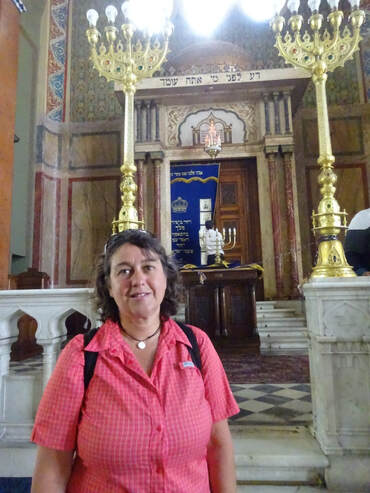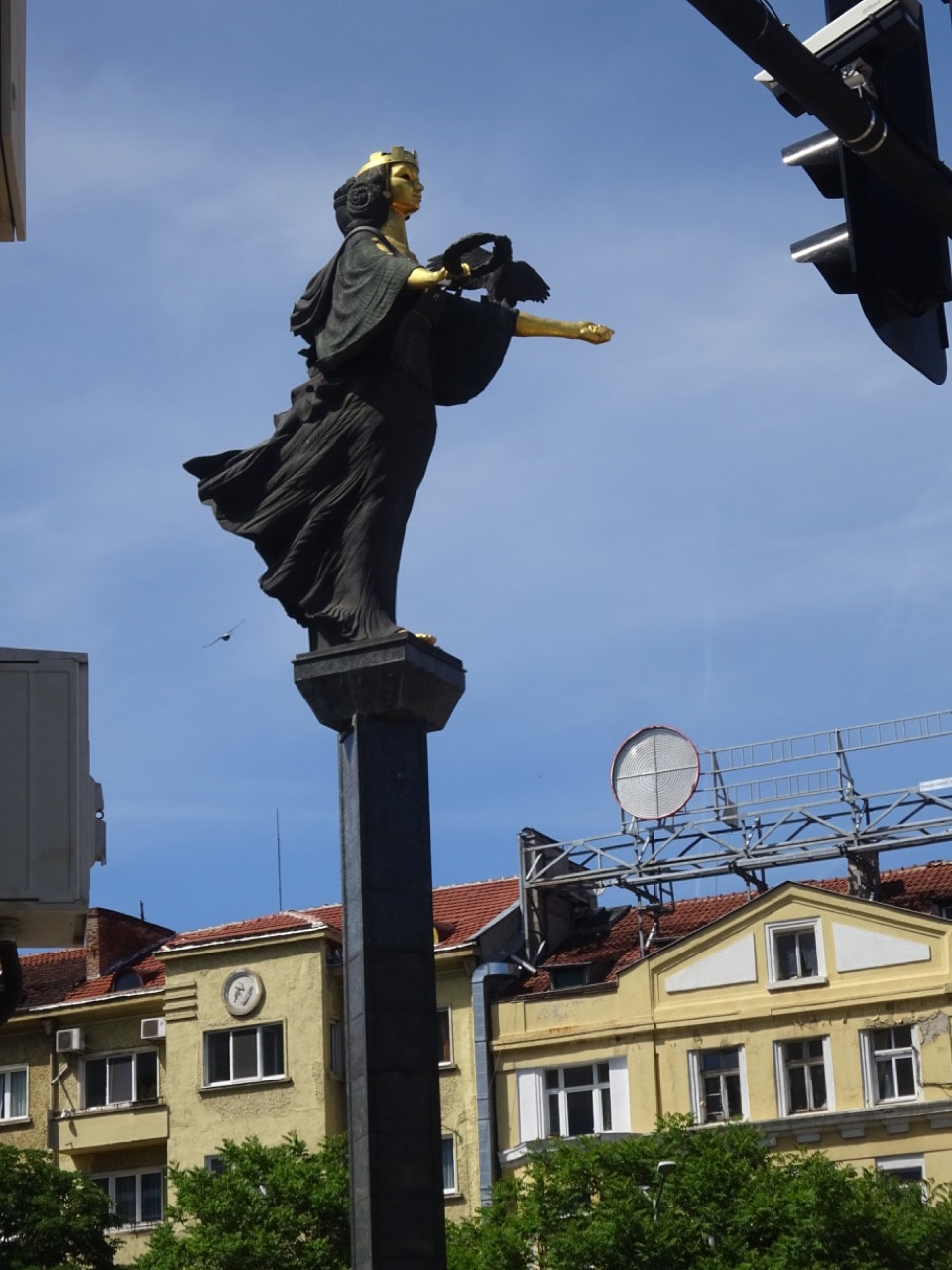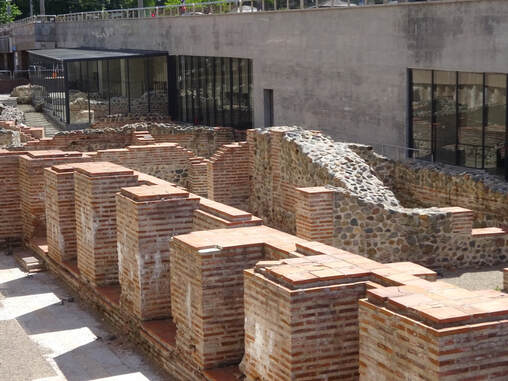We awaken in Sofia, Bulgaria, the largest city and capital. Rrrrrrrghhhhh.......
After grabbing a quick late breakfast, pizza slices, we find our Jewish tour guide for a couple hours of Jewish history around Sofia. This tour was developed by the "365 Tour Company" just before Covid came, and today is the first day back for it, lucky us.
Cool mural seen along the way, don't know if she's Jewish.
In a synagogue, the only one now operating in Sofia, and it seemed very vibrant.
The streets are paved in gold...
The tour continues, the tour guide was excellent, explaining the larger history as well as his families' personal experiences, especially through the communist period.
The Jewish Tour concluded, and we proceeded on our tour book's city walk.
Tomb of the Unknowns:
Tomb of the Unknowns:
St. Alexander Nevsky Cathedral, Bulgarian Orthodox, one of Sofia's symbols and primary tourist attractions and can hold 5,000 people inside, the largest cathedral in the Balkans.
Time for lunch.
The town center had very nice pedestrian friendly spaces.
The Statue of Sveta Sofia, erected in 2000, stands in a spot once occupied by a statue of Lenin, 24 feet in height, the copper and bronze statue stands on a 48 feet pedestal. Adorned with the symbols of power (crown), fame (wreath) and wisdom (owl), the crown is also a reference to the Goddess of Fate, Tyche, inspired by the old emblem of Sofia dating back to 1900.
Roman ruins below the streets and modern buildings.
Currently, the Banya Bashi Mosque is the only functioning mosque in Sofia, a remnant of the Ottoman rule of Bulgaria that lasted nearly five centuries, and is used by the city's Muslim community.
Spring-fed fountains - we saw locals using them steadily, bringing plastic jugs. The water comes out the temperature of a hot tap.
Bulgaria's presidential offices:
Within the courtyard of the presidential offices, stands the Church of Saint George built in the early 4th century among Roman baths, it became a church inside the walls of Serdica, capital of ancient Dacia Mediterranea during the Roman Empire and Byzantine Empire. Some ruins of Serdica still remain next to the church.
The Ivan Vazov National Theatre from 1904.
We ended the night at a tap house featuring Sofia Electric, a local brewery, where the owners even made an appearance. It was a "tap take over" event Gerri found by texting with the brewery staff.




























 RSS Feed
RSS Feed
